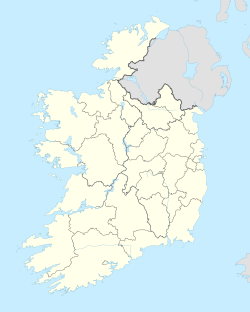Top Qs
Timeline
Chat
Perspective
Culdaff
Seaside village in County Donegal, Ireland From Wikipedia, the free encyclopedia
Remove ads
Culdaff (Irish: Cúil Dabhcha)[2] is a village, civil parish and townland on the Inishowen peninsula of County Donegal, Ireland. Known for its beach, it attracts tourists from all over Ireland.[citation needed] As of 2022[update], the population was 385.[1]
This article needs additional citations for verification. (November 2010) |
The present village dates back to the 8th century and was originally the site of the monastery of St Buadán (Baithéne mac Brénaind), after which the Church of Ireland is named. William Lawson Micks and Samuel Arnold Lawson, acted as Trustees for one hundred acres of bogland at Meenawarra near Culdaff on behalf of the purchaser, Jane Leferre.[3]
Remove ads
Culdaff Beach
Culdaff beach is only about 50 yards away from the village. It includes two beaches, 'the small beach' and 'the big beach'. The beach can be busy during the summer, and is known for the expansive sand on the main beach, and a large area of rocks around the second and further along the coastline.[citation needed]
Fishing
The Bunagee Pier is used as a mooring for boats that take anglers out to fish.[citation needed] Fish caught offshore include White Pollock, Black Pollock, Plaice, Rock Salmon, Sea Trout, and Salmon. Shell Fish include Brown Crab, Lobster, Green Crab, and Velvet Crab.[citation needed]
Sport

The main sport in Culdaff is football and the team is part of the Jackie Crossan Premier Division of the Inishowen Football League. Their home ground, Caratra Park, is next to the beach.[citation needed]
Places of interest

Ancient monuments in the area (located near the Bocan chapel) include the Carrowmore High Crosses, the Cloncha Cross, the Bocan Stone Circle and the Temple of Deen (a ruined court tomb). Also nearby is St. Buadan's high cross which is covered with interlacing and figures of Christ, clerics and animals.[4] Other sights include St. Bodans Rock (located below the Bridge), and the site of old St Bodans well (located behind the Church of Ireland).[citation needed]
Remove ads
Notable people
- Charles Macklin (1699–1797), actor and dramatist
- Frederick Young (1786–1874), soldier
References
Further reading
External links
Wikiwand - on
Seamless Wikipedia browsing. On steroids.
Remove ads


